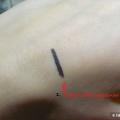Basic rules of nutrition before and after childbirth: a list of products
Immediately after childbirth, special attention should be paid to the issue of nutrition.
Important! You, together with your doctor, need to draw up an individual list of foods, based on analyzes and individual intolerances, which will show what a nursing mother can eat and what not. And follow the recommendations for a certain period of time.
By following the correct diet after childbirth, many allergic reactions, colic, bloating and abdominal pain can easily be avoided.
The diet of a mother who is breastfeeding should be divided into several periods. In the first month and a half after giving birth, the diet should be very strict, and after this time it can become more gentle.
Some experts recommend that young mothers keep their own food diary. This is necessary in order to know exactly which product the baby could have an allergic reaction to. In the left column of the diary, you should write down what new product you introduced, and in the right column, the child's general reaction to such an introduction. If the baby has an allergy to any food eaten by his mother, he just needs to be excluded from the diet for at least one month. After this time, you can try to reintroduce the product into the diet - it is likely that there will be no negative reaction at all.
New foods should be introduced into the diet in very small quantities in the first half of the day, after which it is worth just watching the baby throughout the day. Why in the morning? The answer is simple: if you eat something new in the morning, you will be able to sleep peacefully at night, even if the child is swollen - this bloating will surely go away within twelve hours.
Try to introduce any new products no more than three times a week. If the baby does not have any allergic reaction to the new product, the total dose of its consumption can be gradually increased.
To increase lactation, a nursing mother's diet provides for the use of special products recommended for inclusion in the menu during breastfeeding and helping to fill the need for the most important trace elements and vitamins: zinc, iron, iodine, biotin, folic acid, vitamins C and B. An undeniable advantage specially fortified juices means that a young mother, without changing her eating habits, receives the necessary substances in an easily digestible form. In addition, to increase milk production, you can drink teas with extracts of plants that stimulate lactation, such as lemon balm, nettle, cumin, fennel, anise.
Do not forget to include in your diet a sufficient amount of fruits and vegetables, buckwheat and oatmeal, dairy products, berries, compotes and juices to prevent constipation. The issue of regular bowel movements is very important for a woman during lactation. Ideally, she should have a chair every day.
What to eat after childbirth
So, now let's take a closer look at what foods are allowed to be consumed after childbirth.
In the menu of a nursing woman, first of all, any porridge cooked in water must be present:
- buckwheat;
- oatmeal;
- corn.
You should be more careful about rice porridge, since it can fix the baby. Therefore, if a child suffers from constipation, rice should definitely be excluded from the diet.
You can eat boiled, baked or stewed meat:
- rabbit;
- beef;
- Turkey.

| Product | |
| Eat boiled or baked fish, but no more than twice a week. In this case, preference should be given to not too fatty varieties: hake, pollock, cod, pike perch, carp. | |
| Dairy products | Kefir will be especially useful, but not more than 600 ml per day. Introducing kefir into the diet, it is necessary to observe the baby's reaction, since it can provoke flatulence. |
| Cottage cheese, ryazhanka, yogurt, yoghurts | Be sure to look at the fat content, it should be minimal, and also buy only natural products. |
| Baked apples | choose apples of green varieties (not imported) |
| They contain a very large amount of useful vitamins. At the beginning of lactation, it is worth limiting consumption to one banana per day. | |
| Steamed vegetables: carrots, squash, or beets | They need to be introduced into a woman's diet only in the second or third month. When eating beets, it is necessary to closely monitor the baby's reaction, as it can weaken the baby. |
| Any vegetable soup without legumes and cabbage will be useful, as well as any not very fatty broth. | |
| You can use any, preferably unrefined, vegetable oils: sunflower, olive, corn, but not more than 15 ml per day. It is also allowed to use butter - it is best to add it to porridge, but not more than 25 ml per day. | |
| Nursing mothers can use any bread or bakery products made from wholemeal flour, or better with bran. | |
| Their use is limited and should be taken with caution, as many children are allergic to egg white. | |
| Pasta | Feel free to include them in your diet, choose durum wheat pasta. |
| Potato | Can be eaten baked or mashed. |
| Hard cheeses | choose not very spicy or salty. |
| Spices | Almost any |
| Water, in any form | It is useful to consume a large amount of liquid: it can be high-quality green tea or weak black, still water, tea with fennel or any herbal teas, dried fruit compote, and also do not forget about dill water. |
| Sweets | If we talk about sweet products, then these include “Maria” cookies or other biscuit biscuits (by the way, you can eat them from the first day after giving birth). The use of bagels or crackers is permissible. You can use a limited amount of sugar and confectionery such as marmalade, marshmallows, marshmallows. |
What you can't eat after childbirth
| Chocolates and chocolates | It is impossible in the first three months of feeding, then it can be introduced into the diet. |
| Seafood and caviar | Some saltwater fish can accumulate heavy metals. Caviar can be used, in small quantities, fresh and high-quality in addition. |
| Red fruits, vegetables and berries | Eating is prohibited, especially strawberries or raspberries. They can be introduced into the diet at the latest, no earlier than three months after completion. |
| All raw vegetables, especially tomatoes, cucumbers and radishes. | Try to limit your intake in the first two months of feeding. |
| Causes flatulence in the intestines | |
| Onions, garlic, legumes | The taste of milk may change and the baby may refuse to drink it. |
| Pears and grapes | They can swell the baby. |
| All citrus fruits - lemons, oranges, grapefruits, tangerines, as well as any exotic fruits | They can cause allergies, after 2-3 months you can try to introduce these fruits into the diet, in small slices, 1-2 per day. |
| Melons and watermelons | Can be easily poisoned |
| Canned vegetables | Do not consume pickles in the first 4-5 months. |
| Fatty meat broth, semi-finished products, canned food, sausages and sausages. | |
| Nuts and dried fruits | |
| Ketchup and mayonnaise | |
| Whole cow's milk, sour cream, condensed milk or processed cheese. | |
| Black bread, yeast pastries, cakes, biscuits, rolls. | |
| Barley porridge | Until the child reaches the age of three months, it is not allowed to eat. |
| Semolina | |
| Carbonated drinks | |
| Concentrated juices | |
| Tea bags, plain black tea, cocoa, coffee | |
| Ice cream | |
| Any fast food | |
| Alcohol | Absolutely forbidden. |
| Smoking, salting, fried, fatty, too spicy and gassing food |
What to eat after the baby reaches three months
When the child reaches three months, you can begin to introduce pearl barley, millet and semolina porridge into the diet.
Also, the list of foods that you need to eat will be supplemented with freshly squeezed juices - from apples, carrots, pumpkins, as well as fruit drinks from currants or blueberries.
Fresh onions are allowed.

You can start introducing veal, quail and domestic chicken into the diet.
Start eating nuts little by little, but only very carefully - at first, no more than one nut per day, gradually increasing the dose. Do not eat peanuts and pistachios!
It is allowed to use homemade jam: cherry or apple.
Feel free to add honey and sour cream to your menu.
Correct drinking regimen
A huge role in maintaining full lactation is the drinking regimen. A breastfeeding woman should add at least 1 liter to the usual amount of fluid she drinks. It can be any kind of drinks - water, juice, milk, tea.
It should be noted that it is impossible to introduce a large amount of fluid into the diet immediately after childbirth. During the period of colostrum production, before lactation, the amount of fluid consumed should be limited to 1 liter, otherwise, 2-4 days after birth, an excess amount of milk may begin to be produced, which will complicate its separation, which may result in lactostasis.
In conclusion, it should be said that the diet for women who are breastfeeding should be followed for as long as breastfeeding continues. Of course, at first, the list of prohibited foods is very impressive, because at an early age children react sharply to many foods - some develop an allergic rash, others have problems with stools, and still others have colic and gas formation. But over time, you will be able to indulge yourself from time to time with some healthy products that are on the ban list, although you will have to constantly monitor the baby's reaction.

It should also be mentioned that the quality of breast milk is only partially influenced by the composition of the food eaten by the mother. So, the amount of protein in milk does not depend on the amount of proteins consumed by a woman, however, the amount of minerals, vitamins and fats is directly related to the content of these substances in the diet.
Introducing new foods into the diet must be correct and very careful. Eat a small amount of new food to begin with and observe the child's reaction for a while. The main indicator of rejection is usually the skin. A rash or redness may appear after a few days. If this happens, you should immediately eliminate the new product from your diet.
Dear mothers, always listen to yourself, introduce new products gradually, watch the baby's reaction, and then you will get great pleasure from the usual feeding of the baby!
 How to have the perfect date when you're not romantic
How to have the perfect date when you're not romantic What diseases do you need to drink coffee - benefits and effects
What diseases do you need to drink coffee - benefits and effects All my brown eyeliners
All my brown eyeliners